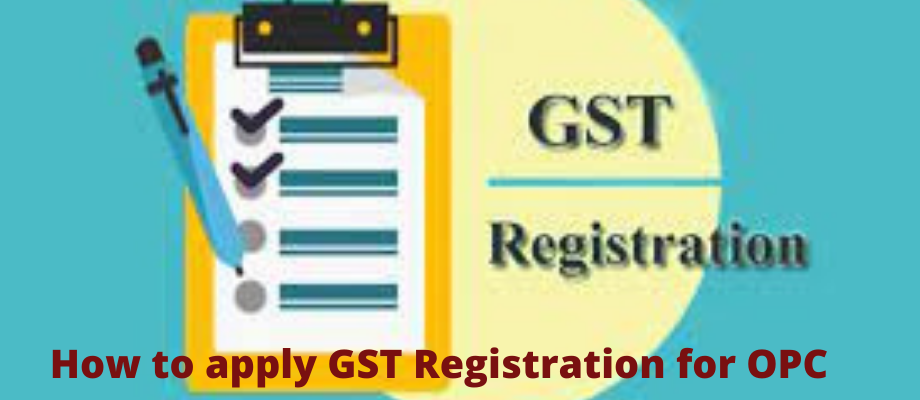How to Browse Singapore GST Registration for Your Firm
How to Browse Singapore GST Registration for Your Firm
Blog Article
The Ultimate Guide to Simplifying the GST Registration Process and Demands for Small Business Owners

Recognizing GST Essentials
To realize the fundamentals of the Goods and Provider Tax (GST) system, tiny company owners have to first recognize its underlying concepts and effects. GST is a value-added tax obligation levied on many products and solutions for residential usage. It aims to enhance the tax process by replacing multiple indirect tax obligations imposed by the state and central federal governments. Under the GST regimen, services are needed to register and accumulate tax in support of the federal government, making certain openness and conformity.
Among the key concepts of GST is input tax obligation credit report, which allows businesses to declare credit rating for taxes paid on their purchases. This mechanism prevents the plunging effect of tax obligations and promotes efficiency in the tax system. Furthermore, GST is a destination-based tax obligation, meaning that the tax obligation is imposed at the factor of consumption rather than the point of origin. This ensures fair distribution of tax obligation earnings amongst states based on where the services or products are eaten. Understanding these fundamental principles is vital for local business owners to browse the complexities of the GST system and guarantee conformity with the regulation.
Eligibility Standards for Registration
Having developed a fundamental understanding of GST concepts, small company owners need to now meet details eligibility standards to continue with the enrollment procedure. In India, entities engaged in the supply of products or services with an annual accumulation turn over exceeding Rs. 40 lakhs (Rs. 10 lakhs for unique category states) are needed to register for GST. In addition, certain businesses such as those associated with inter-state supply of goods, laid-back taxable individuals, and those needed to pay tax under the reverse fee system should sign up for GST regardless of their turnover. Moreover, organizations that were signed up under the previous tax obligation regimen (VAT, service tax obligation, and so on) are also mandated to sign up under GST. Nonetheless, farming organizations that only provide generate out of primary manufacturing are exempt from GST enrollment. It is Going Here critical for entrepreneur to thoroughly assess their qualification based on these standards to make certain compliance with the law and prevent any type of charges for non-compliance.
Files Needed for GST Registration

Simplified Enrollment Refine Actions
Following the collection and confirmation of the requisite papers, the registration process for GST can be browsed with a series of simplified actions developed to promote effective conformity for tiny organization owners. The primary step entails seeing the GST portal and selecting the 'New Enrollment' alternative. Subsequently, the candidate must fill out Part A of the GST REG-01 form with information such as PAN, mobile number, and email address to obtain an OTP for confirmation. When the OTP is received and gotten in, a Short-lived Recommendation Number (TRN) is created for further proceedings. The next action calls for filling in Part B of the form with essential business information, posting sustaining records, and finishing the confirmation process using DSC or EVC. Upon successful verification, an Application Recommended Reading Reference Number (ARN) is issued, showing the conclusion of the GST enrollment process. By adhering to these streamlined steps, local business proprietors can effectively register for GST and make certain compliance with tax guidelines.
Tips for Ensuring Conformity
To maintain regulative adherence and functional stability, persistent oversight and positive steps are essential in guaranteeing compliance with GST requirements for tiny organization owners. Tiny service owners must remain upgraded with GST guidelines, submitting target dates, and any kind of he said adjustments in tax obligation rates to avoid penalties and keep a good standing with tax authorities. Attending GST awareness workshops or training programs can improve understanding and conformity with GST policies, inevitably benefiting the service in the lengthy run.
Final Thought
In final thought, small company proprietors need to recognize the essentials of GST, fulfill the eligibility requirements, gather essential documents, and comply with the simplified registration procedure actions to make certain conformity. By simplifying the GST enrollment procedure and needs, little business proprietors can stay clear of penalties and run their services efficiently within the lawful structure - Singapore GST Registration. It is vital for small service proprietors to remain informed and certified with GST regulations to keep a successful business operation
Small service proprietors seeking GST registration must guarantee they collect and submit the required files to complete the enrollment process successfully. The files needed for GST enrollment usually consist of proof of business registration or incorporation, FRYING PAN (Permanent Account Number) card of the business identification, address and entity proof of the promoters/partners/directors, photographs, address evidence of the area of company, financial institution account declarations or canceled cheques, and permission forms. Participating in GST understanding workshops or training programs can boost understanding and conformity with GST guidelines, ultimately profiting the service in the lengthy run.
By simplifying the GST enrollment process and needs, little service proprietors can prevent charges and operate their organizations smoothly within the lawful structure. It is vital for tiny service owners to stay compliant and educated with GST guidelines to maintain a successful company procedure.
Report this page